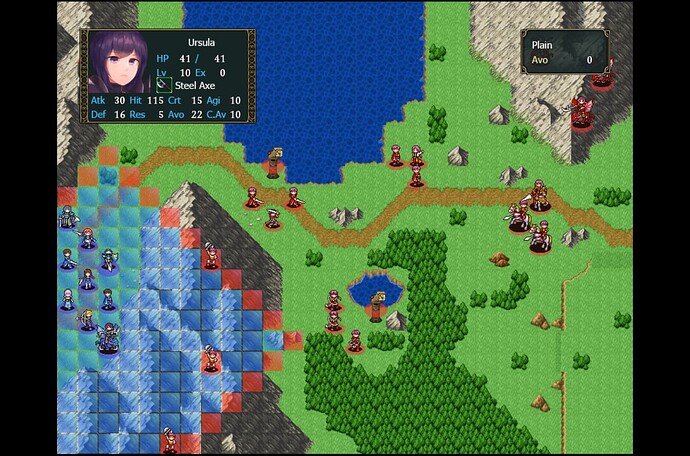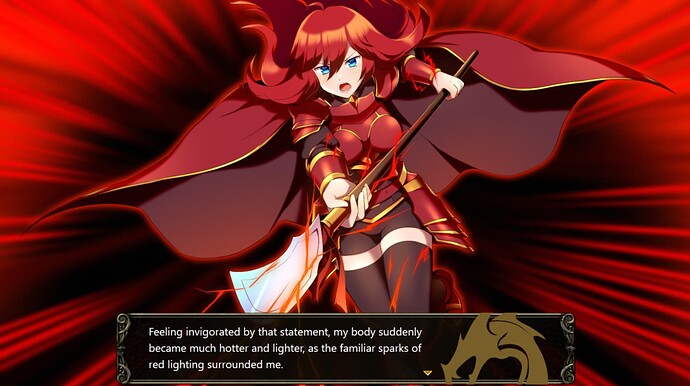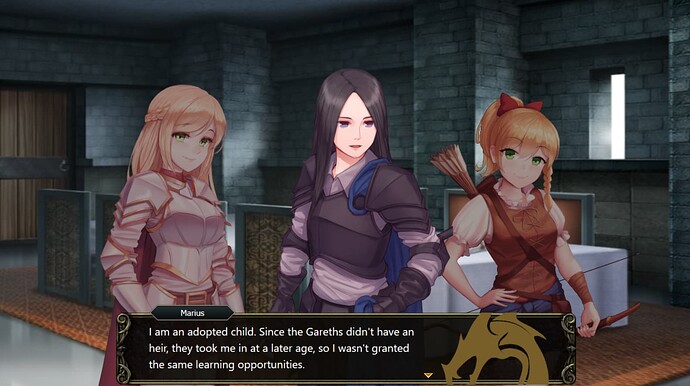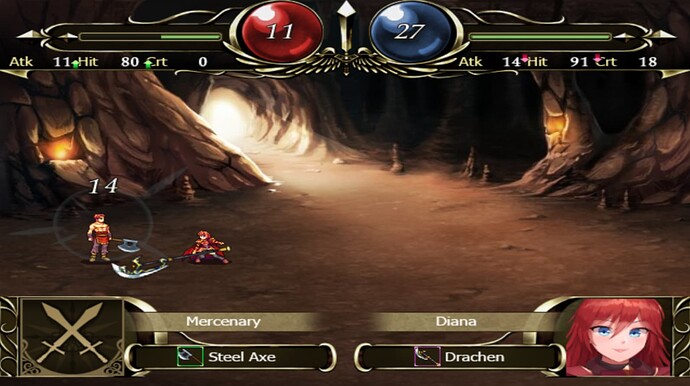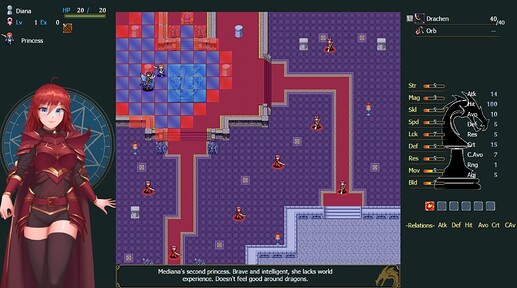Hi everyone!
So I was a bit hesitant in posting this here since it’s not technically a hack or a fangame, but it draws most of its gameplay from Fire Emblem, so I think this is worth a shot.
I’m the developer of Esperia ~ Uprising of the Scarlet Witch ~ it’s a SRPG Studio game with a “Fire Emblem-like” gameplay. It also has strong visual novel influence, in spirit it’s closer to games like Eien no Aselia or Tears to Tiara, ie lots of story and first person narration.
The game has been released on March 1st on Steam. So far the reviews are positive and some are very interesting, too. It is a paid game, but there is a free demo as well, so you can try it for yourself : Esperia ~Uprising of the Scarlet Witch~ on Steam
Here is an overview of the main features, starting with gameplay and moving to the story part
Overall:
- Playtime is over 30h, there are 22 main chapters, 8 secrets/character chapters and 4 additional maps. The story part is very rich, too, with CGs and choices.
Gameplay:
- While animation style is closer to the first FE (that’s SRPG Studio style) the gameplay is more influenced by GBA’s opus. Simply because I like them more. The way units are positioned, classes, stats and GR and weapons are, both consciously and unconsciously, inspired by FE6-7-8.
- Weapon triangle is a thing. There are 3 magic types with a triangle as well, similar to FE7.
- There are skills. Each class will learn two skills (at lv 5&15 and then at lv1&10 when promoted). You can promote at lv 10 and it resets to level 1. No reclass. I like the tradeoff and the fact the player has to balance between optimizing stats and immediate use. I won’t go in details on skills, but you find the classics, with phase-based skills as well. Player-phase skills have better bonus than enemy phase ones, this is an incentive to turn to player phase.
- The main difference with FE is the use of Area of Effect spell and terrain modification. The game has 3 magic types, but also 3 support magic types. Instead of just a bunch of staves, it’s a bunch of staves, orbs and charms. There are over 50 of those, with stats buff and debuff, the usual silence/paralysis/berserk, and some magic creating holes in the map or surrounding the user with forest. I was surprised Engage decided to add something similar, clearly they’re inspired by me xD
- The relationship system is similar to support system in Fire Emblem, with three levels and alternate ending at the highest level. Characters have only a few specific characters they can have relations with, and it’s limited per playthrough. C-rank gives bonus like supports, but B-rank give an extra skill to each character, so a priest having a B-rank relation with a knight will inherit a knight-restricted class skill and the knight a priest-restricted class skill.
- Each levelup gives a unit two “free points” they can use to buy a stat increase. The higher the Growth Rate for the skill, the less costly it is to up the stat. This allows players to compensate for bad level up (no fixed rates) and ‘rebuild’ a bit the character to suit their playstyle.
- This is a 1RN game with permadeath. Deal with it. Permadeath is disable on easy, however.
- Apparently… Difficulty is high. One topic in the community is called “why is the game so hard?” and one of the review is something along the line of “normal mode is hard mode in FE games”. I don’t think it’s necessarily true, but since there are some different mechanics, I assume players don’t think about using temporary buffs or debuffs, for instance. It’s not “made to be hard”, but it’s certainly not easy either.
Story:
- The story takes place in a medieval fantasy world with a lot of Arthurian myths references. The main heroine, Diana, is the second (bastard) princess of the kingdom and has to run away after being accused of treason and witchcraft. The main theme of the story, beyond war and political schemes, is family and acceptance.
- As mentioned before: lot of ‘story’ in this story. While FE is dialog based, Esperia has a visual novel approach, narration becomes more important as the game progress. There are choices as well, unlocking new scenes and affecting the relationships of the main heroine with other characters.
- Some characters have “character stories”, they are entire new story chapters restricted to the two-three units sharing a relationship. They bring a lot of lore and unlock alternate classes for the characters.
- Relationship stories (the supports) are real stories, too. They’re much more developed than the usual 10 lines support from FE.
- When a character dies on the game, they die in the story. What I mean by that, is that instead of having a death quote and forgetting their entire existence 5 seconds later, each chapter has a specific death scene that triggers if a character dies in this chapter, and there is a flashback scene after each character dies, and a burial scene. FE characters’ indifference toward a friend death is something that always bothered me so I had to correct it.
- Technically, the game is rated 16+ in Brazil and Germany (it’s now mandatory to do rating surveys for sale in both of these countries). I picked 15+ here because 17+ feels like it would involves more explicit material, and honestly… the choices in Steam partner ratings are absurd. Anyway, there is a clear ‘mature content description’ on the Steam Page, if you want to check what it entails precisely.
If you’re interested, you can buy it now on Steam, it’s 20% off until next monday… Or you can wishlist it or simply talk about it. It always helps a lot. I’m open to feedback too, here or in the steam game community.
Thank you for reading!

